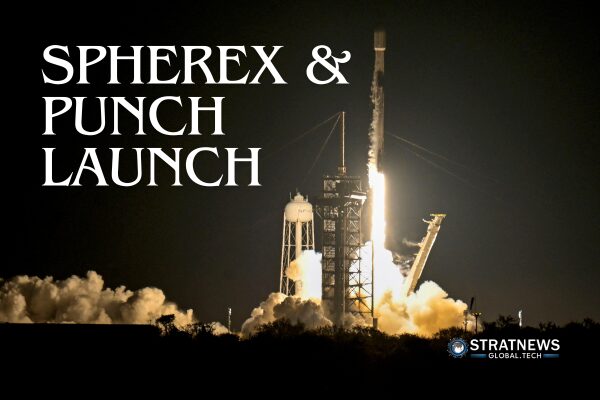A Historic Night at Vandenberg Space Force Base
A spectacular launch lit up the skies over Vandenberg Space Force Base in California as a SpaceX Falcon 9 rocket carried NASA’s SPHEREx and PUNCH missions into space. The liftoff, which took place on March 11 at 11:10 p.m. EST (0310 March 12 GMT), marked a major milestone for both projects.
The atmosphere was electric as mission control celebrated, onlookers cheered, and the scientists behind these missions expressed a mix of relief and excitement. “I am so happy that we’re finally in space!” said Farah Alibay, lead flight system engineer for SPHEREx at NASA’s Jet Propulsion Laboratory.
SPHEREx: Mapping the Universe in Infrared
The SPHEREx mission, valued at $488 million, aims to map the entire sky in 102 infrared colors, offering an unprecedented view of the cosmos. Similar to the James Webb Space Telescope (JWST), SPHEREx detects infrared wavelengths, which are crucial for studying distant galaxies, exoplanets, and cosmic history.

Unlike JWST, which provides highly detailed images of small sky sections, SPHEREx is designed for a wide-field approach, scanning the entire celestial sky. The data it collects will help scientists understand the formation of galaxies, the presence of water ice in space, and the effects of cosmic expansion.
The telescope, standing 8.5 feet (2.6 meters) tall, will operate in a polar, Sun-synchronous orbit. This positioning ensures that it remains protected from the Sun’s heat, preventing infrared interference that could compromise data quality. Every 98-minute orbit will allow it to capture a 360-degree strip of the sky, completing an all-sky map every six months.
PUNCH: Unlocking the Secrets of the Solar Wind
While SPHEREx looks outward into the cosmos, PUNCH focuses on the Sun’s outer atmosphere, or corona. The $165 million mission consists of four small satellites designed to study how the corona transforms into the solar wind—a stream of charged particles that fills the heliosphere, the vast bubble surrounding our solar system.
By using advanced imaging techniques, PUNCH will track the evolution of coronal mass ejections (CMEs) and other solar events that impact space weather. Understanding these phenomena is vital, as solar storms can disrupt GPS signals, interfere with satellites, and even cause power grid failures on Earth.
The four PUNCH satellites will orbit near Earth’s day-night boundary, constantly exposed to sunlight for continuous solar observations. One satellite will simulate a total solar eclipse to capture high-definition images of the corona, while the others will use polarimetry to create a 3D map of solar structures.
The Road Ahead for PUNCH and SPHEREx
The journey is far from over. Both missions must now settle into their respective orbits and undergo a 90-day commissioning phase to ensure all instruments function correctly.
SPHEREx is expected to survey over 450 million galaxies and more than 100 million stars during its two-year mission. PUNCH, also designed for a two-year mission, will provide real-time data on solar activity, improving space weather forecasts and helping protect Earth’s technological infrastructure.
With their successful launch, SPHEREx and PUNCH join an elite group of NASA space explorers. While SPHEREx aligns with the JWST in unraveling cosmic mysteries, PUNCH will complement missions like the Parker Solar Probe in studying the Sun’s influence on the solar system.
With inputs from Reuters


